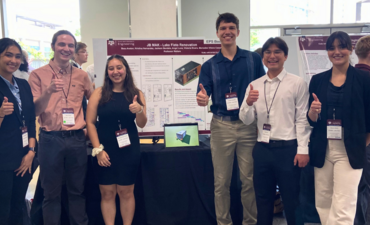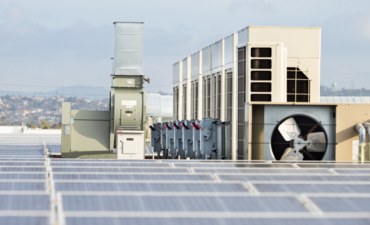
At the nucleus of today's digital push forward into the future of tomorrow are digital twins. Digital twins are representations of physical assets, processes, or systems, as well as the engineering information that allows us to understand and model their performance. Digital twin technology can enable facility managers to see their engineering, operational, and information technologies from a holistic view, providing accurate and relevant infrastructure information that can improve their operational decisions.
I believe that the foundation of improving facility design is in understanding data.
When dealing with facility design, you need to recognize the challenges in embracing digital twins in the engineering and construction industries. From my experiences, both good and bad, I have some thoughts on how facility owners can use digital twins to improve their facility design, and how they can continue seeing the value throughout a building's lifecycle.
Incorporating facility managers & owners into the project visualization & design process
I believe that the foundation of improving facility design is in understanding data. Trending buzzwords include big data and the Internet of Things, but many people don't understand what this means with regards to facility design and ultimately, facility management. The true value of a properly executed digital twin is most likely to be realized during a facility's lifecycle, but only if the right data collection and management choices are made during (and even before) the design process. Facility managers and operators are routinely excluded from design decisions despite being among the most qualified people to provide input during this critical phase. Making sure designers ask the right questions is paramount to the success of a project. Some questions to consider during the design process include:
- What data is necessary to get the project started? To complete it?
- To maintain a facility after construction for its lifecycle? What is important to know and why?
- How does the owner/operator of a facility leverage the data collected during a project after it is turned over?
- How do they store, assess, and maintain that data during a facility's lifecycle? Do they even use the data?
- Is the owner/operator getting the right data to maintain its facility?
- What is the anticipated lifecycle of the facility?
Having an informed idea of what information is needed when, why, and by who is integral to improving facility design and project integration. Understanding data as a concept rather than just a buzzword is crucial to using digital twins to improve project management.
Making sure designers ask the right questions is paramount to the success of a project.
Better planning, better designs
A digital twin is effectively a virtual replica that includes comprehensive data about the composition of the physical twin. Traditional BIM data collection relies on of some combination of (maybe) a COBie spreadsheet deliverable, O&M manual binders, a couple CDs, and boxes upon boxes full of paper. However, digital twin technology can benefit the project early in the planning phases by giving you data that is useful and immediately available for managing your facility. For instance, an "under construction" digital twin can help the project team with scheduling and phasing work, simulating design options and anticipated system loads to help better plan and execute the work. After handover, a properly built digital twin can be used in conjunction with a computer assisted facility management platform (CAFM) or computer managed maintenance system (CMMS) to help with planning capital projects and improvements, run preventive maintenance routines and maintenance work order workflows, tracking asset/equipment warranties, and provide design and construction firms with accurate facility models and backgrounds for future renovations. A key to that would be, again, gathering the right information, ensuring the proper mechanisms are in place to maintain the data, and, ideally, setting up a bi-directional transfer of data between a model and CAFM/CMMS.
Benefits from using digital twins
Facility managers and building owners can benefit from digital twin development and usage by leveraging data more efficiently and effectively across their facility portfolio. By examining the current state, companies are better poised to know how the work is done, whether there are problems with the process, or if there is no problem at all. Looking at opportunities to streamline processes, augment capabilities, and add personnel capacity will bring us forward into the future of using digital twins. While digital twins can improve communication early in the building process, there are bound to be some hiccups in crossing the gap between the physical world and its digital duplicate. With input from the owners, operators, and facility managers who use digital twins on their projects, the engineering and construction industries can continue to find new ways to improve data collection and their facility design processes using digital twins.
Senior Manager of Construction Operations Technology
As Senior Manager, Construction Operations Technology, Judd collaborates with our divisions to implement and manage technology solutions nationwide, including cloud platforms like Autodesk Construction Cloud. He holds a Bachelor of Architecture from Virginia Tech, a Virtual Design and Construction certificate from the Center for Integrated Facility Engineering at Stanford University, and a Building Information Modeling certificate from the College of Built Environments at the University of Washington.



